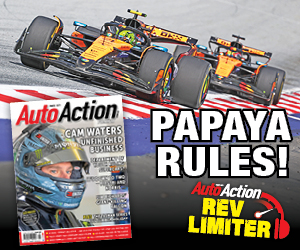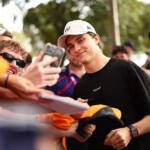FEATURE – LANCE STROLL – A STROLL IN THE PARK
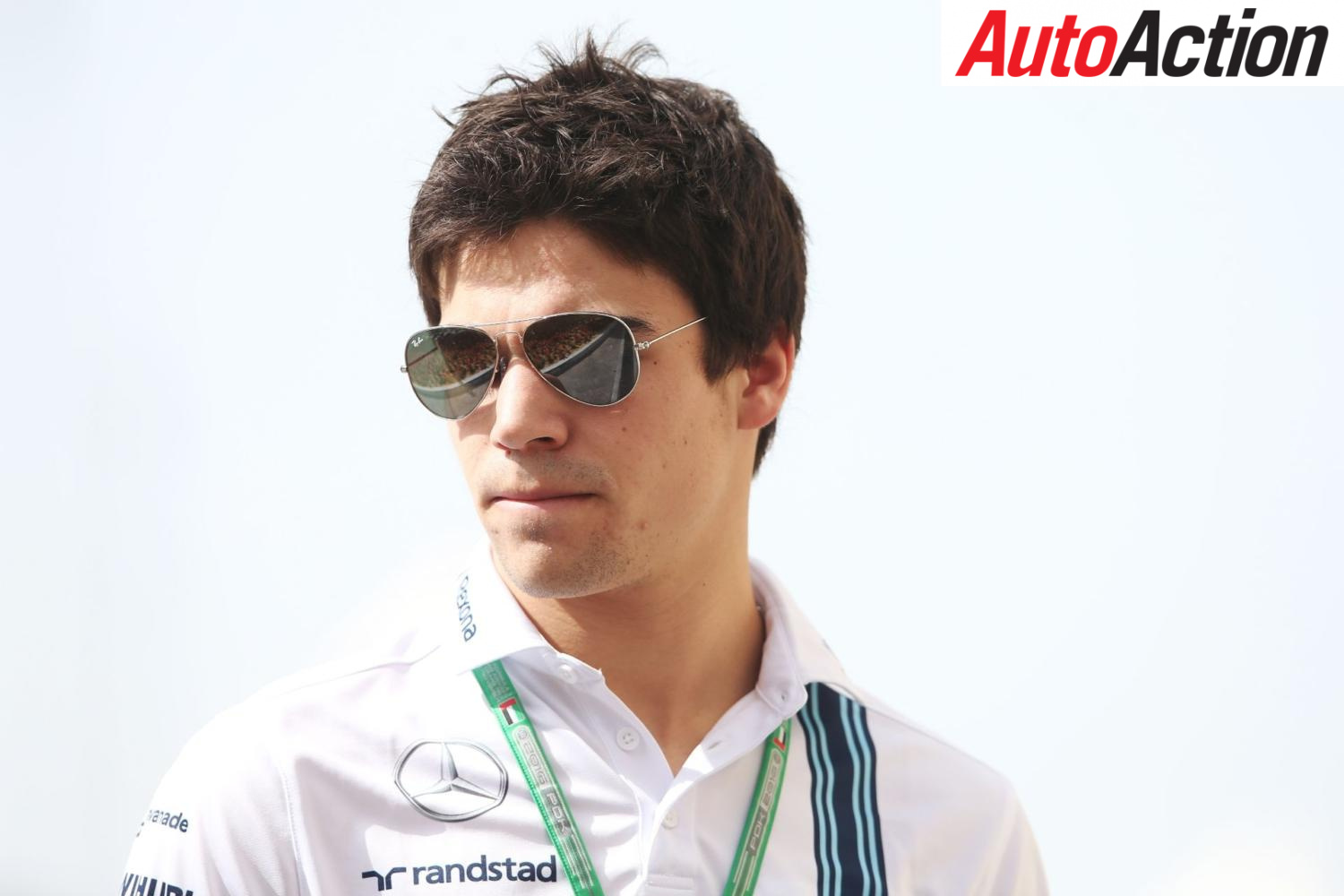
By Bruce Williams
Date posted: 14 June 2017
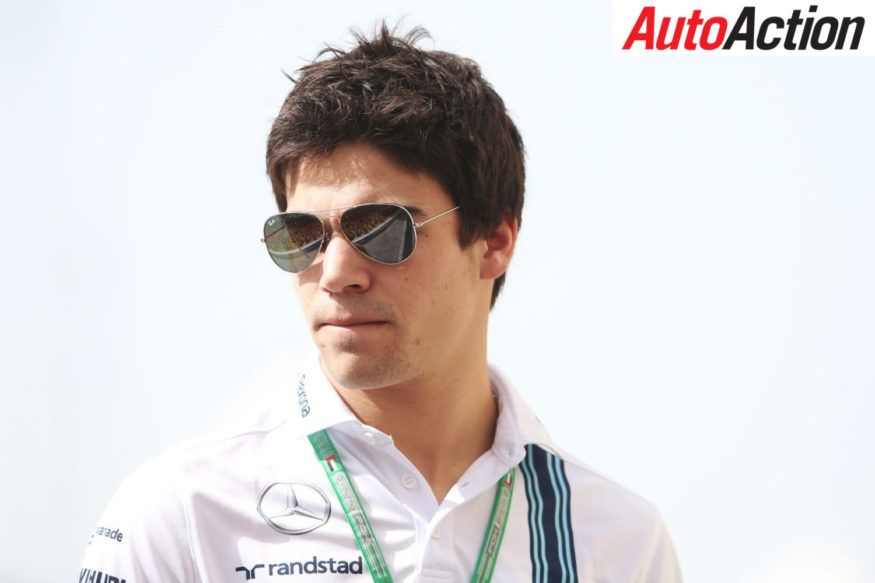
Lance Stroll made his Grand Prix debut in Melbourne
Lance Stroll made his GP debut with Williams in Melbourne – and the Canadian is keen to prove he is not just another ‘chequebook racer’
By DAN KNUTSON
BILLIONAIRE LAWRENCE Stroll reportedly spent US$80 million to fund the racing career of his son Lance Stroll who will make his Formula 1 racing debut with Team Williams in the Australian Grand Prix at the end of March.
Critics, cynics and some people who are just plain jealous maintain that Stroll only made it to the top level of motor sport because his father paved his way with cash. He’s used to all that by now.
“There are two ways it works,” he explains. “You need to have a sponsor or a family member who helps you from eight-years-old to whatever age you arrive to Formula 1. Without that I would not have been able to move from Canada to Europe to pursue my dream.
“Money doesn’t get you wins, it just allows you to race, which is true. You can’t deny that. It is a very expensive sport we are in. There are plenty of drivers who haven’t had that opportunity who are very talented, which is really unfortunate – that is just the sport we are in.”
He has a point. Red Bull, Mercedes, McLaren, Ferrari, Renault and, in the past, companies like Elf and Marlboro, have all helped young drivers – everyone from Alain Prost to Daniel Ricciardo – to get to Formula 1.
“I worked really hard,” Stroll says. “I went on to win those championships and without those championships I wouldn’t be here. I could have all the money in the world and finished last and that wouldn’t have put me where I am today.”
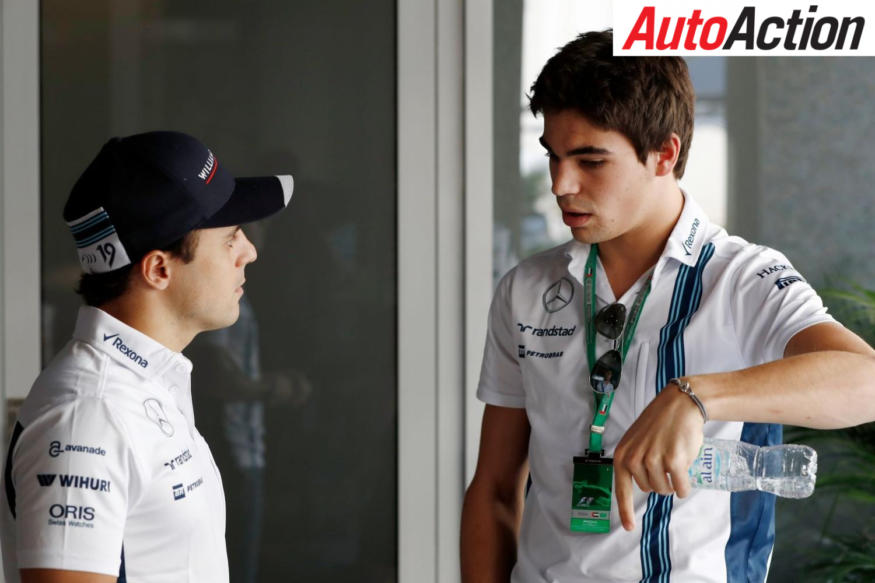
Lance Stroll talking with Williams veteran Felipe Massa
So how did Stroll get to where he is today?
Born in Montreal on 29 October 1998, he got his first taste of speed at age five in a go-kart purchased by his father. At age eight he won his first race. In 2008 he won the Canadian Championship. He continued to win races and championships in North America, and he competed in international competition as well. He became a member of Ferrari’s Driver Academy in 2010.
He graduated to car racing and single seaters in the Florida Winter Series in 2014, and the following year he won the Italian Formula 4 championship with seven victories in 18 starts. Next he won New Zealand’s Toyota Racing Series with four wins in 16 starts early in 2015.
He moved to the European Formula 3 Championship with the Prema Powerteam in 2015. Prema is a premier outfit, and Lawrence Stroll bought it and invested in it so as to give his son the best platform possible to advance his career. Lance’s first season saw one victory and several heavy crashes, but things went a lot better in 2016 when he earned the title with 14 wins, 14 poles, 13 fastest laps and 20 podiums in 30 races.
“Formula 3 is a really good car that teaches you how to drive,” Stroll notes. “There is not so much power but that is why it is a very complicated car to drive because you have to find that edge and you can’t really go over it and you can’t be under it.”
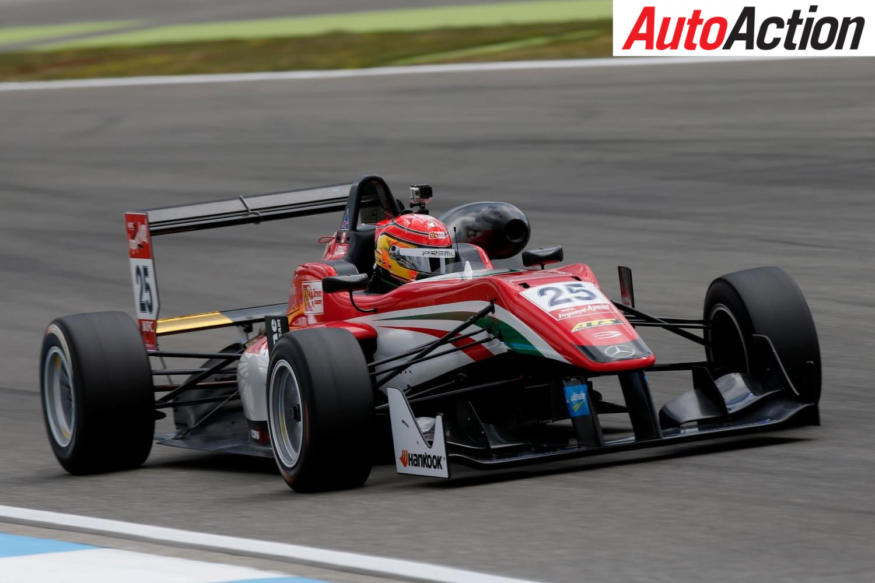
Lance Stroll competing in European F3
Math not money earned him enough points to qualify for an FIA super license that allows him to compete in Formula 1.
“Money can’t buy wins,” Stroll says. “If you don’t have the super license – which requires winning championships like F4, F3, or maybe GP2 if you don’t win F3 – if you don’t get those 40 points which I have done you don’t get into Formula 1.”
A month after Stroll won the Formula 3 championship Williams confirmed that he would race for the team. Williams Deputy Team Principal Claire Williams insists that money did not earn Stroll his seat. It is a wealthy enough team that it does not have to take on pay drivers. On the other hand, the team is not going to turn down any contributions. For example, Valtteri Bottas’ sponsor Wihuri paid Williams 8 million euros [A$11m] a season.
Stroll is already getting plenty of Formula 1 experience thanks to his father funding a full-fledged test programme with Williams. Using a 2014 F1 car, which is allowed by the rules, the test team has literally been around the world giving Stroll the chance to drive a F1 car on major tracks. He has also been spending time in the simulator back at the Williams factory in England.
“I am prepared,” he says. “Any little bit you can get you have to take, so the team have been very cooperative on preparing me as much as possible for 2017. We have new tyres, a new aero package new everything. So it is going to be very different, but it is definitely good making a step from a ‘14 car to the ‘17 car rather than going right from Formula 3 to the ‘17 car.”
Stroll is part of the new young generation in Formula 1. He’s 18-years-old. Only Max Verstappen, who was 17 years and 166 days old, was younger when he made his debut in Australia in 2015.
“Max is definitely an example,” Stroll says. “Not to me but to the sport and that that step from Formula 3 to Formula 1 is possible, and that young drivers are capable of competing in Formula 1. But everyone has their own unique situation. They go to different teams, so it is too hard to compare just like that. I am just going to focus on myself and do the best I possibly can.”
How has Stroll found the transition from a 2016 Formula 3 car to a 2014 Williams Formula 3 machine?
“At the end it is just another car on four wheels,” he says. “I have been driving all sorts of different cars all my life: karting, Formula 4, Formula 3 and now Formula 1. There are always challenges in each category, new things to learn, and every step you make always feels like it is the biggest step you have done in your life. The first impression was very powerful, a lot of grip and basically the best car in the world, which is what it is. It is the top of the leagues, but it is another car with challenges and things to learn. So I am just getting better and more used to it every time I get in.”
“We have a lot of work to prepare for the first race and experience and all that,” he adds. “It is not like I will arrive in Melbourne and know everything and that is my season. It is a long-term project. Williams expects me to improve throughout the season.
“I have a great team behind me to help me do that, and I have a great teammate [Felipe Massa] who is a great benchmark for me. He has many years with the team, has proven to be very fast and will help me a lot throughout the year. I don’t want to just set any expectations or set the bar too high. I will progress race by race and that is what I am going to do: I am going to take it race by race and lap by lap.”
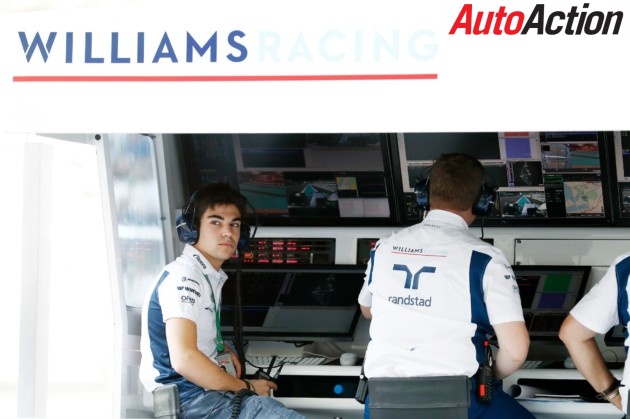
Lance Stroll spent time learning with Williams F1 in 2016
Pat Symonds, Williams’ former Technical Director, says that Stroll is the best prepared rookie to come into Formula 1 since fellow Canadian Jacques Villeneuve made his debut with Williams in 1996 in Melbourne. Villeneuve qualified on the pole and led much of the race until he was slowed by an oil leak and finished second.
Villeneuve did some 10,000km of testing in 1995 and 1996 Williams Formula 1 cars before he made his debut. He already had an IndyCar championship and an Indy 500 win under his belt, so he had much more experience in relevant cars compared to Stroll. Furthermore, the Williams back then was the best car on the grid compared to last year’s Williams which was only good enough to take fifth place in the constructors’ championship.
Nobody is expecting Stroll to emulate Villeneuve in his Formula 1 debut, but it will be interesting to see how the young Canadian fares and compares to teammate Massa and the rest of the drivers. It will be Stroll’s performance on the track, not his father’s fortune, which will give the answers lap by lap and race by race.
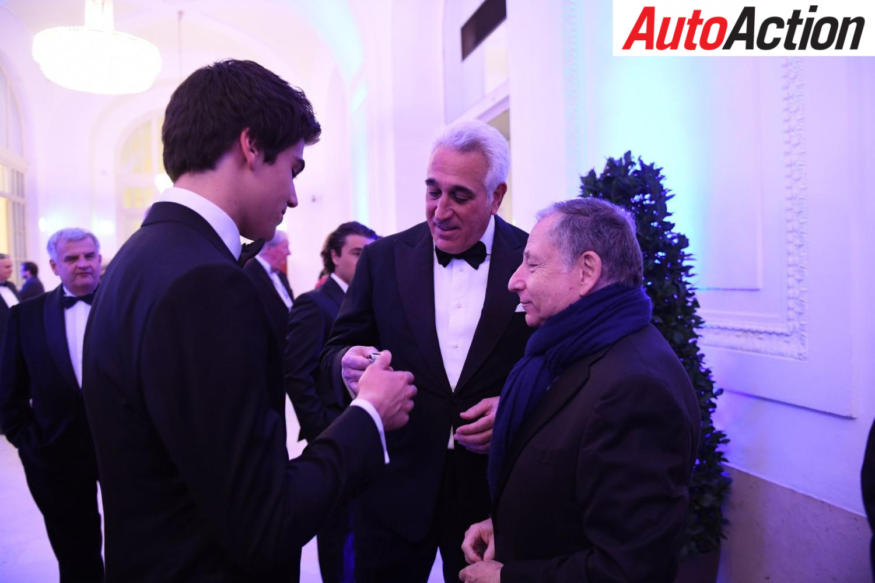
Lance Stroll with Lawrence Stroll and Jean Todt
SELF-MADE BILLIONAIRE
LAWRENCE STROLL was listed at number 722 on Forbes’ list of billionaires last year. He is a self-made man.
Born in Montreal in 1959, Lawrence Sheldon Strulovitch [he later changed his sir name to Stroll] started out working in his father’s clothing business.
Stroll was instrumental in bringing clothing brands Pierre Cardin and Ralph Lauren to Canada. He and partner Silas Chou invested in and helped build Tommy Hilfiger into a billion dollar business. They also bought shares in luxury goods company Michael Kors and then cashed out in 2011.
A keen racing and car enthusiast, Stroll has a large collection of cars, mostly Ferraris, including a 330 P4, a 1962 250 GTO, and a 1967 Ferrari GTB/4 S NART Spider bought at action in 2013 for a then record US$27.5 million. And if he ever needs a place to drive them he also owns the Circuit Mont-Tremblant north of Montreal.
Stroll and his wife live in Geneva. They have two children: Lance and Chloe. He has a net worth of US$2.4 billion, more than enough to fund his son’s racing career and climb to Formula 1.
Lance believes he is a product of both his own passion for racing and that of his father.
“Without someone inspiring you and someone allowing you to watch the races when you are a kid I think that you don’t just get into it,” he says. “You have to have someone who shows you what it is all about, who turns on the grands prix on Sunday morning, and who enjoys racing.
“I wouldn’t say be pushed me, as that is the wrong word, but if I wouldn’t want to do it he wouldn’t want me to do it. It really is my choice to do what I am doing. We obviously share a passion; we are big motorsport fans and just love racing, and that definitely is the reason why we are here.”
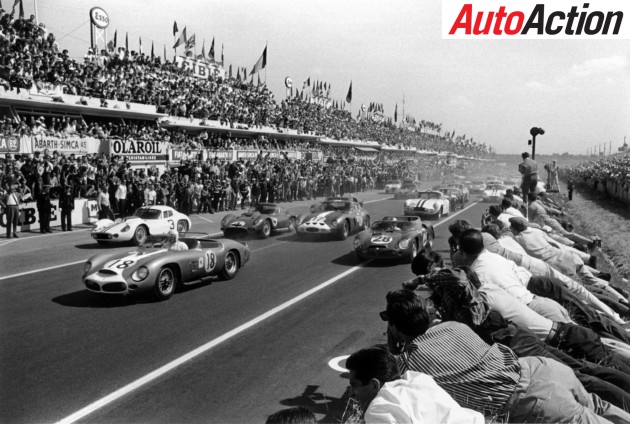
Peter Ryan was the first Canadian Grand Prix driver
PRIVATE RYAN
LANCE STROLL will be the 14th man to race in a Grand Prix carrying the colours of Canada.
Many will know the names of other Canadians to have raced in Formula 1 – Villenueve is three of them, and two of those were named Jacques – but who was the first man to race for Canada in a GP?
Peter Ryan was actually born in Philadelphia but the downhill skier sought Canadian citizenship when he wanted to compete for the Great White North as a teenager. But a crash that broke both his legs left him unable to ski at the level he wanted, so he turned to motor racing.
It did not take long to show that he was good – very good. He won the 6-hour Sundown Grand Prix in a Porsche at Harewood with co-driver Roger Penske, and from there he entered a Formula Libre race at Watkins Glen. He started the race fifth – the drivers ahead of him were named Moss, Brabham, Bonnier and Gendebien – and chased the leaders until he stopped with engine problems after 56 laps.
In 1961 he won the very first Canadian GP, then held for Sportscars, ahead of Pedro Rodriguez (Ferrari 250 TR) and Stirling Moss. Both Ryan and Moss were driving similar Lotus 19s; the Canuck won by a lap.
That led to an invitation to compete at the ’61 US GP at Watkins Glen in October. He qualified 13th in an ex-works J Wheeler Autosport Lotus 18 Climax, and finished ninth. Such was the impact he made that he was invited to race in Europe by Lotus, and upon arrival he was ‘loaned’ to Ian Walker Racing. In a car he built himself – Colin Chapman thought it was a good idea – he immediately made his presence felt, beating Peter Arundell in a works Lotus for Formula Junior honours at Mallory Park.
He was still quick in Sportscars, and after standout drives at Daytona and Sebring, and was invited to race at Le Mans by Ferrari’s semi-works NART team. With co-driver John Fulp, Ryan was in contention until he crashed into an earth bank and retired, but not before exhausting himself, trying for two hours to dig the 250 TR out.
A few weeks later Ryan lined up at the Coupe Internationale des Juniors Formula Junior race at Rheims. After battling for the lead with Frank Gardner, John Love and Bill Moss, Ryan clashed with the latter. Both Ryan’s Lotus and Moss’s Gemini left the track at high speed and while Moss was unhurt, Ryan’s car landed on top of him and he was seriously injured. He was evacuated to a Paris hospital and after lying in a coma for 30 hours, died the next day. He had just turned 22, and was interred at Mont Tremblant, alongside his father.
Ryan was inducted into the Canadian Motorsport Hall of Fame in its inaugural ‘class’ in 1993. Others inducted that year include John Cannon, Eppie Wietzes and Gilles Villeneuve.
Pick up the latest issue of Auto Action magazine for our most recent feature. Also follow us on social media Facebook, Twitter and Instagram news between issues.
Recent Stories
array (
0 =>
WP_Term::__set_state(array(
'term_id' => 37,
'name' => 'F1',
'slug' => 'f1',
'term_group' => 0,
'term_taxonomy_id' => 37,
'taxonomy' => 'category',
'description' => 'An Introduction to Formula One (F1)
Formula One, or F1, is the highest class of single-seater auto racing, governed by the Fédération Internationale de l\'Automobile (FIA) and is owned by Liberty Media. The name "Formula One" refers to the set of rules or formula that all cars and drivers must comply with.
The F1 season consists of a series of races, known as Grands Prix, held on purpose-built circuits or public roads around the world. The results of each race are combined to determine two annual championships: one for drivers and one for constructors (teams).
The history of Formula One can be traced back to the pre-war Grand Prix racing, which featured open-wheel cars with supercharged engines. The first World Championship of Drivers was organised by the FIA in 1950, following the end of World War II. The first race was held at Silverstone, England, and was won by Giuseppe Farina, driving an Alfa Romeo. The first constructors\' championship was introduced in 1958 and was won by Vanwall.
Formula One has seen many changes and innovations over the years, both in terms of technology and regulations. Some of the most notable developments include the introduction of rear-engined cars in the late 1950s, the use of aerodynamic wings in the late 1960s, the adoption of turbocharged engines in the late 1970s, the emergence of electronic driver aids in the late 1980s, the switch to V10 and then V8 engines in the 1990s and 2000s, and the introduction of hybrid power units in 2014.
Formula One has also produced some of the greatest drivers and rivalries in the history of motorsport. Some of the most famous names include Juan Manuel Fangio, Jim Clark, Jackie Stewart, Niki Lauda, Ayrton Senna, Alain Prost, Michael Schumacher, Lewis Hamilton, and Sebastian Vettel. Some of the most intense battles for the championship have been between Fangio and Stirling Moss in the 1950s, Lauda and James Hunt in the 1970s, Senna and Prost in the late 1980s, Schumacher and Mika Hakkinen in the late 1990s, and Hamilton and Vettel in the 2010s.
Formula One is widely regarded as the pinnacle of motorsport, attracting millions of fans and viewers worldwide. The sport is also a huge business, involving billions of dollars in revenue and expenditure. The teams compete for prize money, sponsorship deals, and media rights, while the drivers earn millions of dollars in salaries and endorsements. The sport is also influenced by politics, regulations, and controversies, such as doping scandals, espionage cases, safety issues, and environmental concerns.
The following is a list of all F1 World Drivers Champions by year, from 1950 to 2020:
1950-1959
1950: Giuseppe Farina (Italy) - Alfa Romeo 158, Alfa Romeo
1951: Juan Manuel Fangio (Argentina) - Alfa Romeo 159, Alfa Romeo
1952: Alberto Ascari (Italy) - Ferrari 500, Ferrari
1953: Alberto Ascari (Italy) - Ferrari 500, Ferrari
1954: Juan Manuel Fangio (Argentina) - Maserati 250F, Maserati / Mercedes-Benz W196, Mercedes-Benz
1955: Juan Manuel Fangio (Argentina) - Mercedes-Benz W196, Mercedes-Benz
1956: Juan Manuel Fangio (Argentina) - Ferrari D50, Ferrari
1957: Juan Manuel Fangio (Argentina) - Maserati 250F, Maserati
1958: Mike Hawthorn (United Kingdom) - Ferrari 246, Ferrari
1959: Jack Brabham (Australia) - Cooper T51, Cooper-Climax
1960-1969
1960: Jack Brabham (Australia) - Cooper T53, Cooper-Climax
1961: Phil Hill (United States) - Ferrari 156, Ferrari
1962: Graham Hill (United Kingdom) - BRM P57, BRM
1963: Jim Clark (United Kingdom) - Lotus 25, Lotus-Climax
1964: John Surtees (United Kingdom) - Ferrari 158, Ferrari
1965: Jim Clark (United Kingdom) - Lotus 33, Lotus-Climax
1966: Jack Brabham (Australia) - Brabham BT19, Brabham-Repco
1967: Denny Hulme (New Zealand) - Brabham BT20, Brabham-Repco
1968: Graham Hill (United Kingdom) - Lotus 49, Lotus-Ford
1969: Jackie Stewart (United Kingdom) - Matra MS80, Matra-Ford
1970-1979
1970: Jochen Rindt (Austria) - Lotus 72, Lotus-Ford
1971: Jackie Stewart (United Kingdom) - Tyrrell 003, Tyrrell-Ford
1972: Emerson Fittipaldi (Brazil) - Lotus 72D, Lotus-Ford
1973: Jackie Stewart (United Kingdom) - Tyrrell 006, Tyrrell-Ford
1974: Emerson Fittipaldi (Brazil) - McLaren M23, McLaren-Ford
1975: Niki Lauda (Austria) - Ferrari 312T, Ferrari
1976: James Hunt (United Kingdom) - McLaren M23, McLaren-Ford
1977: Niki Lauda (Austria) - Ferrari 312T2, Ferrari
1978: Mario Andretti (United States) - Lotus 79, Lotus-Ford
1979: Jody Scheckter (South Africa) - Ferrari 312T4, Ferrari
1980-1989
1980: Alan Jones (Australia) - Williams FW07B, Williams-Ford
1981: Nelson Piquet (Brazil) - Brabham BT49C, Brabham-Ford
1982: Keke Rosberg (Finland) - Williams FW08, Williams-Ford
1983: Nelson Piquet (Brazil) - Brabham BT52, Brabham-BMW
1984: Niki Lauda (Austria) - McLaren MP4/2, McLaren-TAG
1985: Alain Prost (France) - McLaren MP4/2B, McLaren-TAG
1986: Alain Prost (France) - McLaren MP4/2C, McLaren-TAG
1987: Nelson Piquet (Brazil) - Williams FW11B, Williams-Honda
1988: Ayrton Senna (Brazil) - McLaren MP4/4, McLaren-Honda
1989: Alain Prost (France) - McLaren MP4/5, McLaren-Honda
1990-1999
1990: Ayrton Senna (Brazil) - McLaren MP4/5B, McLaren-Honda
1991: Ayrton Senna (Brazil) - McLaren MP4/6, McLaren-Honda
1992: Nigel Mansell (United Kingdom) - Williams FW14B, Williams-Renault
1993: Alain Prost (France) - Williams FW15C, Williams-Renault
1994: Michael Schumacher (Germany) - Benetton B194, Benetton-Ford
1995: Michael Schumacher (Germany) - Benetton B195, Benetton-Renault
1996: Damon Hill (United Kingdom) - Williams FW18, Williams-Renault
1997: Jacques Villeneuve (Canada) - Williams FW19, Williams-Renault
1998: Mika Häkkinen (Finland) - McLaren MP4/13, McLaren-Mercedes
1999: Mika Häkkinen (Finland) - McLaren MP4/14, McLaren-Mercedes
2000-2009
2000: Michael Schumacher (Germany) - Ferrari F1-2000, Ferrari
2001: Michael Schumacher (Germany) - Ferrari F2001, Ferrari
2002: Michael Schumacher (Germany) - Ferrari F2002, Ferrari
2003: Michael Schumacher (Germany) - Ferrari F2003-GA, Ferrari
2004: Michael Schumacher (Germany) - Ferrari F2004, Ferrari
2005: Fernando Alonso (Spain) - Renault R25, Renault
2006: Fernando Alonso (Spain) - Renault R26, Renault
2007: Kimi Räikkönen (Finland) - Ferrari F2007, Ferrari
2008: Lewis Hamilton (United Kingdom) - McLaren MP4-23, McLaren-Mercedes
2009: Jenson Button (United Kingdom) - Brawn BGP 001, Brawn-Mercedes
2010-2020
2010: Sebastian Vettel (Germany) - Red Bull RB6, Red Bull-Renault
2011: Sebastian Vettel (Germany) - Red Bull RB7, Red Bull-Renault
2012: Sebastian Vettel (Germany) - Red Bull RB8, Red Bull-Renault
2013: Sebastian Vettel (Germany) - Red Bull RB9, Red Bull-Renault
2014: Lewis Hamilton (United Kingdom) - Mercedes F1 W05 Hybrid, Mercedes
2015: Lewis Hamilton (United Kingdom) - Mercedes F1 W06 Hybrid, Mercedes
2016: Nico Rosberg (Germany) - Mercedes F1 W07 Hybrid, Mercedes
2017: Lewis Hamilton (United Kingdom) - Mercedes F1 W08 EQ Power+, Mercedes
2018: Lewis Hamilton (United Kingdom) - Mercedes F1 W09 EQ Power+, Mercedes
2019: Lewis Hamilton (United Kingdom) - Mercedes F1 W10 EQ Power+, Mercedes
2020: Lewis Hamilton (United Kingdom) - Mercedes F1 W11 EQ Power+, Mercedes
2021-
2021: Max Verstappen (Netherlands) – Red Bull RB16B, Honda
2022: Max Verstappen (Netherlands) – Red Bull RB18, Red Bull Power Trains Honda
2023: Max Verstappen (Netherlands) – Red Bull RB19, Red Bull Power Trains Honda
2024: Max Verstappen (Netherlands) – Red Bull RB20, Red Bull Power Trains Honda',
'parent' => 660,
'count' => 2880,
'filter' => 'raw',
'cat_ID' => 37,
'category_count' => 2880,
'category_description' => 'An Introduction to Formula One (F1)
Formula One, or F1, is the highest class of single-seater auto racing, governed by the Fédération Internationale de l\'Automobile (FIA) and is owned by Liberty Media. The name "Formula One" refers to the set of rules or formula that all cars and drivers must comply with.
The F1 season consists of a series of races, known as Grands Prix, held on purpose-built circuits or public roads around the world. The results of each race are combined to determine two annual championships: one for drivers and one for constructors (teams).
The history of Formula One can be traced back to the pre-war Grand Prix racing, which featured open-wheel cars with supercharged engines. The first World Championship of Drivers was organised by the FIA in 1950, following the end of World War II. The first race was held at Silverstone, England, and was won by Giuseppe Farina, driving an Alfa Romeo. The first constructors\' championship was introduced in 1958 and was won by Vanwall.
Formula One has seen many changes and innovations over the years, both in terms of technology and regulations. Some of the most notable developments include the introduction of rear-engined cars in the late 1950s, the use of aerodynamic wings in the late 1960s, the adoption of turbocharged engines in the late 1970s, the emergence of electronic driver aids in the late 1980s, the switch to V10 and then V8 engines in the 1990s and 2000s, and the introduction of hybrid power units in 2014.
Formula One has also produced some of the greatest drivers and rivalries in the history of motorsport. Some of the most famous names include Juan Manuel Fangio, Jim Clark, Jackie Stewart, Niki Lauda, Ayrton Senna, Alain Prost, Michael Schumacher, Lewis Hamilton, and Sebastian Vettel. Some of the most intense battles for the championship have been between Fangio and Stirling Moss in the 1950s, Lauda and James Hunt in the 1970s, Senna and Prost in the late 1980s, Schumacher and Mika Hakkinen in the late 1990s, and Hamilton and Vettel in the 2010s.
Formula One is widely regarded as the pinnacle of motorsport, attracting millions of fans and viewers worldwide. The sport is also a huge business, involving billions of dollars in revenue and expenditure. The teams compete for prize money, sponsorship deals, and media rights, while the drivers earn millions of dollars in salaries and endorsements. The sport is also influenced by politics, regulations, and controversies, such as doping scandals, espionage cases, safety issues, and environmental concerns.
The following is a list of all F1 World Drivers Champions by year, from 1950 to 2020:
1950-1959
1950: Giuseppe Farina (Italy) - Alfa Romeo 158, Alfa Romeo
1951: Juan Manuel Fangio (Argentina) - Alfa Romeo 159, Alfa Romeo
1952: Alberto Ascari (Italy) - Ferrari 500, Ferrari
1953: Alberto Ascari (Italy) - Ferrari 500, Ferrari
1954: Juan Manuel Fangio (Argentina) - Maserati 250F, Maserati / Mercedes-Benz W196, Mercedes-Benz
1955: Juan Manuel Fangio (Argentina) - Mercedes-Benz W196, Mercedes-Benz
1956: Juan Manuel Fangio (Argentina) - Ferrari D50, Ferrari
1957: Juan Manuel Fangio (Argentina) - Maserati 250F, Maserati
1958: Mike Hawthorn (United Kingdom) - Ferrari 246, Ferrari
1959: Jack Brabham (Australia) - Cooper T51, Cooper-Climax
1960-1969
1960: Jack Brabham (Australia) - Cooper T53, Cooper-Climax
1961: Phil Hill (United States) - Ferrari 156, Ferrari
1962: Graham Hill (United Kingdom) - BRM P57, BRM
1963: Jim Clark (United Kingdom) - Lotus 25, Lotus-Climax
1964: John Surtees (United Kingdom) - Ferrari 158, Ferrari
1965: Jim Clark (United Kingdom) - Lotus 33, Lotus-Climax
1966: Jack Brabham (Australia) - Brabham BT19, Brabham-Repco
1967: Denny Hulme (New Zealand) - Brabham BT20, Brabham-Repco
1968: Graham Hill (United Kingdom) - Lotus 49, Lotus-Ford
1969: Jackie Stewart (United Kingdom) - Matra MS80, Matra-Ford
1970-1979
1970: Jochen Rindt (Austria) - Lotus 72, Lotus-Ford
1971: Jackie Stewart (United Kingdom) - Tyrrell 003, Tyrrell-Ford
1972: Emerson Fittipaldi (Brazil) - Lotus 72D, Lotus-Ford
1973: Jackie Stewart (United Kingdom) - Tyrrell 006, Tyrrell-Ford
1974: Emerson Fittipaldi (Brazil) - McLaren M23, McLaren-Ford
1975: Niki Lauda (Austria) - Ferrari 312T, Ferrari
1976: James Hunt (United Kingdom) - McLaren M23, McLaren-Ford
1977: Niki Lauda (Austria) - Ferrari 312T2, Ferrari
1978: Mario Andretti (United States) - Lotus 79, Lotus-Ford
1979: Jody Scheckter (South Africa) - Ferrari 312T4, Ferrari
1980-1989
1980: Alan Jones (Australia) - Williams FW07B, Williams-Ford
1981: Nelson Piquet (Brazil) - Brabham BT49C, Brabham-Ford
1982: Keke Rosberg (Finland) - Williams FW08, Williams-Ford
1983: Nelson Piquet (Brazil) - Brabham BT52, Brabham-BMW
1984: Niki Lauda (Austria) - McLaren MP4/2, McLaren-TAG
1985: Alain Prost (France) - McLaren MP4/2B, McLaren-TAG
1986: Alain Prost (France) - McLaren MP4/2C, McLaren-TAG
1987: Nelson Piquet (Brazil) - Williams FW11B, Williams-Honda
1988: Ayrton Senna (Brazil) - McLaren MP4/4, McLaren-Honda
1989: Alain Prost (France) - McLaren MP4/5, McLaren-Honda
1990-1999
1990: Ayrton Senna (Brazil) - McLaren MP4/5B, McLaren-Honda
1991: Ayrton Senna (Brazil) - McLaren MP4/6, McLaren-Honda
1992: Nigel Mansell (United Kingdom) - Williams FW14B, Williams-Renault
1993: Alain Prost (France) - Williams FW15C, Williams-Renault
1994: Michael Schumacher (Germany) - Benetton B194, Benetton-Ford
1995: Michael Schumacher (Germany) - Benetton B195, Benetton-Renault
1996: Damon Hill (United Kingdom) - Williams FW18, Williams-Renault
1997: Jacques Villeneuve (Canada) - Williams FW19, Williams-Renault
1998: Mika Häkkinen (Finland) - McLaren MP4/13, McLaren-Mercedes
1999: Mika Häkkinen (Finland) - McLaren MP4/14, McLaren-Mercedes
2000-2009
2000: Michael Schumacher (Germany) - Ferrari F1-2000, Ferrari
2001: Michael Schumacher (Germany) - Ferrari F2001, Ferrari
2002: Michael Schumacher (Germany) - Ferrari F2002, Ferrari
2003: Michael Schumacher (Germany) - Ferrari F2003-GA, Ferrari
2004: Michael Schumacher (Germany) - Ferrari F2004, Ferrari
2005: Fernando Alonso (Spain) - Renault R25, Renault
2006: Fernando Alonso (Spain) - Renault R26, Renault
2007: Kimi Räikkönen (Finland) - Ferrari F2007, Ferrari
2008: Lewis Hamilton (United Kingdom) - McLaren MP4-23, McLaren-Mercedes
2009: Jenson Button (United Kingdom) - Brawn BGP 001, Brawn-Mercedes
2010-2020
2010: Sebastian Vettel (Germany) - Red Bull RB6, Red Bull-Renault
2011: Sebastian Vettel (Germany) - Red Bull RB7, Red Bull-Renault
2012: Sebastian Vettel (Germany) - Red Bull RB8, Red Bull-Renault
2013: Sebastian Vettel (Germany) - Red Bull RB9, Red Bull-Renault
2014: Lewis Hamilton (United Kingdom) - Mercedes F1 W05 Hybrid, Mercedes
2015: Lewis Hamilton (United Kingdom) - Mercedes F1 W06 Hybrid, Mercedes
2016: Nico Rosberg (Germany) - Mercedes F1 W07 Hybrid, Mercedes
2017: Lewis Hamilton (United Kingdom) - Mercedes F1 W08 EQ Power+, Mercedes
2018: Lewis Hamilton (United Kingdom) - Mercedes F1 W09 EQ Power+, Mercedes
2019: Lewis Hamilton (United Kingdom) - Mercedes F1 W10 EQ Power+, Mercedes
2020: Lewis Hamilton (United Kingdom) - Mercedes F1 W11 EQ Power+, Mercedes
2021-
2021: Max Verstappen (Netherlands) – Red Bull RB16B, Honda
2022: Max Verstappen (Netherlands) – Red Bull RB18, Red Bull Power Trains Honda
2023: Max Verstappen (Netherlands) – Red Bull RB19, Red Bull Power Trains Honda
2024: Max Verstappen (Netherlands) – Red Bull RB20, Red Bull Power Trains Honda',
'cat_name' => 'F1',
'category_nicename' => 'f1',
'category_parent' => 660,
)),
1 =>
WP_Term::__set_state(array(
'term_id' => 6,
'name' => 'Features',
'slug' => 'features',
'term_group' => 0,
'term_taxonomy_id' => 6,
'taxonomy' => 'category',
'description' => 'AA looks beyond the news',
'parent' => 0,
'count' => 291,
'filter' => 'raw',
'cat_ID' => 6,
'category_count' => 291,
'category_description' => 'AA looks beyond the news',
'cat_name' => 'Features',
'category_nicename' => 'features',
'category_parent' => 0,
)),
)







